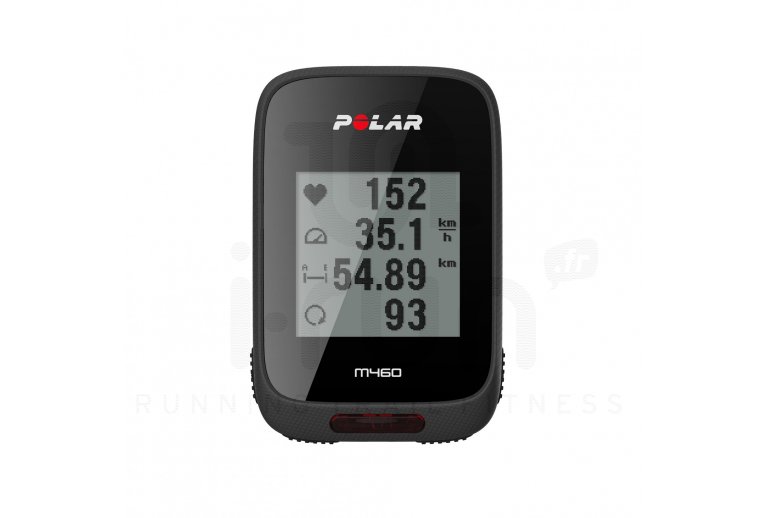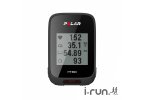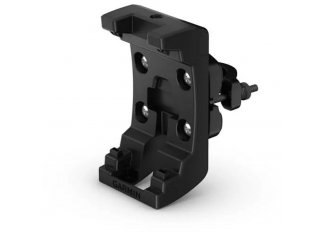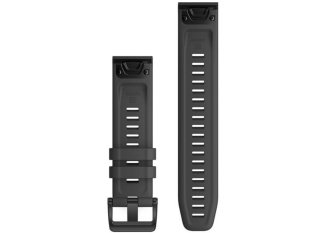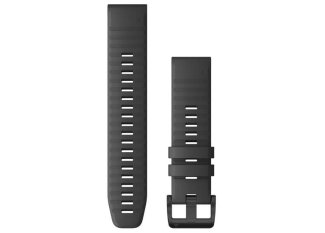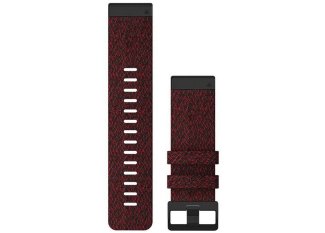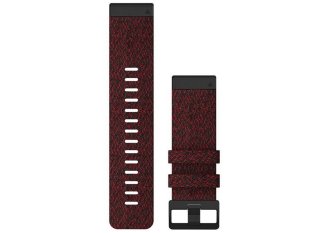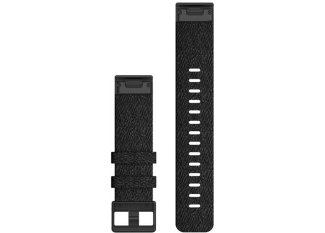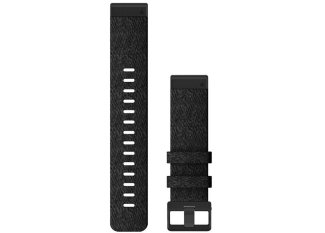The i-Run team says
Polar M460 Bike Computer: a comprehensive model with multiple services
The Polar M460 bike computer is more than just an activity tracker. On its own, it allows you to switch between a power meter, training with a coach on Training Peaks, and challenges with the Strava community. Its GPS functions make it an ally throughout your sporting activities on a bike.
This Polar GPS computer provides all the necessary information for an optimal cycling session. Your speed, distance, and altitude are calculated thanks to the integrated GPS. You can plan, synchronize, and share your performances with the mobile app and Polar Flow Web service. You can also set your own goals and try to beat your personal record.
Equipped with a GPS, it guides you back to the starting point by indicating the shortest distance and informs you of the distance already covered. Quick and easy, you just need to press one button to get directions for your return. It also has an altimeter via GPS.
Your bike computer is equipped with Smart Coaching functions to display the progress of your physical condition and your performance. It shows the exact number of calories burned, helps you to stay active throughout the day, and provides an analysis of your activity.
The mobile app allows you to get an overview of your training and analyze it. You have a simple and clear view of your daily activity. Synchronization is easily done via Bluetooth Smart.
Key points of the Polar M460 computer
- Bike computer
- Bluetooth Smart: wireless synchronization via the Polar Flow app
- Activity tracking functions
- Heart rate functions possible with the belt (not included)
- Speed, distance, altitude, and integrated GPS
- Return to starting point function
- Bluetooth power meter compatibility
- Inclinometer: indicates the slope percentage uphill or downhill
- Live Strava segments: segment results display
- Power Metrics: compatible with Bluetooth power meters
- Smartphone notifications: convenience
- Compact format
- Rechargeable battery: 16 hours with GPS
- Carbon design: elegance and robustness
- Front LED light: visibility and safety
- IPX7: splash resistance
- Compatible with Polar Flow Web service and Polar Flow mobile app via Bluetooth Smart
- Dimensions: 7.4 x 4.9 x 1.8 cm
- Weight: 50g
Box contents
- M460 GPS watch
- USB cable
- Polar M460 Quick Start Guide
- Handlebar mount
Technical description
- Heart Rate Function (with chest strap, not included)
Heart rate (HR) is an excellent way to measure the intensity of exercise and your training. The human body's heart rate adapts to the body's demands and environmental conditions. When exercise intensity increases, heart rate increases accordingly to meet higher energy expenditure and oxygen demand.
It can be expressed as an absolute number of beats per minute (bpm), or as a percentage of your maximum heart rate (% HRmax) or heart rate reserve (% HRR). By itself, the absolute heart rate doesn't provide much information, but when expressed and interpreted as a percentage of HRmax or HRR, it determines the intensity of the exercise in question.
Your heart rate, in beats per minute (e.g., 125 bpm), is an individual value that cannot be compared with another person's. However, for a given percentage of your maximum heart rate, you can make comparisons. For example, one of your friends may have a higher bpm heart rate than yours, yet you achieve the same percentage of your respective HRmax values. This means you had the same relative training intensity.
- MAX HR Function (with chest strap, not included)
Maximum heart rate (HRmax) is the highest number of beats per minute (bpm) your heart can generate during physical exertion. HRmax is an individual value and can slightly decrease with age. It defines your personal reference value for training intensity and is used in the calculation of default heart rate zones as well as in many Polar Smart Coaching features.
Age-based HRmax is an approximate estimate of your maximum heart rate; most Polar heart rate monitors use this estimate by default. To determine your HRmax in the most reliable and safe manner, perform a test with a specialist.
- Heart Rate Zone Function (with chest strap, not included)
Allows you to easily adjust and monitor the intensity of your training. You can also use these heart rate zones in heart rate-based training programs. The default zones are based on your HRmax.
Each training intensity has different benefits. For example, low intensity improves aerobic endurance, while high intensity enhances your body's ability to sustain prolonged exercise and your maximum oxygen consumption.
The default heart rate zones are divided into five intensity zones, each corresponding to a range of percentages of your maximum heart rate:
Very light (50-60% of HRmax)
Light (60-70% of HRmax)
Moderate (70-80% of HRmax)
High (80-90% of HRmax)
Maximum (90-100% of HRmax)
You can set the zone limits as you wish. More detailed information is available on the Polar Flow web service.
- Speed and Pace Zones
Allows you to easily choose and monitor your training intensity based on speed or pace. Speed/pace zones help you vary your training using different intensities to achieve the best possible results. For example, when going uphill, your pace is generally reduced, but your heart rate and exercise intensity increase.
Speed/pace zones work similarly to heart rate zones, even though speed/pace changes immediately while heart rate takes a few moments to reach a new intensity level. There are five zones. You can use the default zones, but we recommend setting your own. You can also create training targets based on these zones and receive guidance on your heart rate monitor during your training.
Speed/pace zones are supported for running, cycling, rowing, and canoeing.
More detailed information is available on the Polar Flow web service. - Power Zones
Allows you to record your training intensity for cycling and get the most out of your training. Power zones are based on power, which is a direct measure of the absolute intensity of exercise.
Power is an absolute measure of the external effort rate, while heart rate corresponds to the physiological effort needed to produce the power. Seeing how your heart rate positions itself within power zones and how it evolves over time gives you a better understanding of your performance.
To use power zones, you need Bluetooth® Smart Keo Power pedals and a Bluetooth® Smart compatible training device, such as the Polar V800 or Polar V650, which allows you to see power data from the pedals during the training session.
You can set the zone limits as you wish. More detailed information is available on the Polar Flow web service.
- Power Measurement with Training Peaks
TrainingPeaks users can track Normalized Power® (NP®), Intensity Factor® (IF®), and Training Stress Score® (TSS®).
- ZoneLock
Keeps your training at a certain intensity. With ZoneLock, you can target and lock a specific training zone during your session. When you go out of the predefined heart rate, speed, pace, or power zones, the heart rate monitor triggers a visual and auditory alarm.
- Zone Pointer
A symbol that appears on your heart rate monitor screen indicating if you are within the predefined or desired target zone. This function helps you reach the desired intensity/pace/speed goals.
- Strava Live SegmentsMakes your runs more exciting with Strava Live Segments. Receive alerts for nearby segments, view your real-time performance, and then your results once the segment is completed. Available for Strava Premium members.
- Orthostatic Test
An easy and reliable test that allows you to analyze how you recover after intense and frequent training, optimize your training, and avoid overtraining. The orthostatic test is designed for long-term tracking, based on regular tests.
Heart rate and heart rate variability are good indicators of autonomic nervous system disturbances, such as fatigue or overtraining. During the test, heart rate and heart rate variability are measured at rest in a lying position, in an active standing position, and in a standing position.
In addition to fatigue caused by training, orthostatic test results can be affected by several other factors, such as mental stress, sleep, latent illness, environmental changes (temperature, altitude), and other elements.
Please note that you cannot compare your orthostatic test results with those of a friend: these results are individual and only apply to you.
- Polar Fitness Test
Estimates your aerobic fitness at rest without any effort in just five minutes. The result, called Polar OwnIndex, assesses your maximum oxygen uptake (VO2max) and indicates your level of aerobic fitness compared to people of the same age and sex.
The test takes into account your resting heart rate, heart rate variability, gender, age, height, weight, and self-assessment of your long-term physical activity level. You can compare this value to population norms, i.e., the average values of people of the same age and sex as you.
The Polar Fitness Test can motivate you to start exercising, maintain it, or intensify it. You only need your heart rate monitor and a heart rate transmitter.
For it to reflect your progress, the test should always be performed under the same conditions, i.e., at the same time of day, in a quiet environment, and after a day of light exercise or rest.
- Smart Calories
Calculates the number of calories burned based on your personal data: your weight, height, age, gender, HRmax, HRrest, and VO2max, as well as the intensity of your training/activity.
Caloric expenditure based on heart rate is calculated simultaneously with heart rate. This calculation is more reliable for sports such as cycling or weightlifting. Caloric expenditure based on activity is calculated using a heart rate monitor and activity tracker when it is not possible to measure heart rate.
You can view your cumulative energy expenditure (in kilocalories, kcal) during exercise, and the total kilocalories of your session after exercise. You can also track your total daily caloric expenditure.
- Training Benefit
Helps you understand how beneficial each training session is for your fitness level. You also receive motivating feedback immediately after your exercise. With the Training Benefit feature, you can vary your training by changing its intensity and duration.
Training Benefit data is based on exercise intensity and duration. It tells you the time and caloric expenditure in each intensity zone. You get a quick overview after each session. For a more detailed report, you can review your training file on your heart rate monitor or in the Polar Flow app or web service.
- Training Load
Training Load indicates the intensity of your training session and helps you compare the load of different exercises. For example, you can compare the load of a long, low-intensity cycling session to that of a short, high-intensity running session.
Training Load is based on the intensity and duration of the training session. The session's intensity is primarily measured based on your heart rate. The calculation considers your personal data, such as age, gender, weight, VO2max (maximum oxygen uptake), and training history.
Your aerobic and anaerobic thresholds are also used in the calculation. The sport practiced during the session is also considered, thanks to a specific factor that increases the calculation's reliability.
Available in Polar Flow.
- Recovery Status
Recovery Status helps you find the balance between training and rest and estimates the training load you can tolerate. This feature tracks your cumulative load, which is the intensity, volume, and frequency of your training and daily activity measured by a Polar device. It also takes into account your training history and estimates your current and future physical effort levels.
Too much training relative to recovery time can lead to fatigue and reduced performance. On the other hand, if training is too low for a period, you may not reach your full potential. Continuous monitoring of your recovery status allows you to plan your training so it is neither too low nor too high.
The four levels of recovery status are:
Undertrained
Balanced
Tired
Very Tired
You can view your recovery status on the Polar Flow web service. V800 users can also view it on the device screen.
Available in Polar Flow.
- Back to Start
Guides you back to your starting point by the shortest possible route (in a straight line) and also indicates the distance to that point.
- Distance
Distance (km, mi) can be set and measured in various ways. Training distance tells you the distance covered during a training session. Split distance tells you the distance of a time split.
- Altitude, Ascent, and DescentAllows you to identify your actual altitude and determine conditions related to altitude. Your altitude is indicated in meters/feet and in ascending and descending meters/feet. Altitude is measured either using GPS or a barometric pressure sensor (V800, V650, M450).
- Sport Profiles
Allows you to choose the sport corresponding to your training from over a hundred Polar activities, with access to reports by sports activity. The selected sport allows you to obtain valuable information.
All sport profiles are based on a certain logic, and specific multipliers affecting the calculation of calorie consumption and training load are available for the most common sports (endurance).
You can choose and customize your favorite sports and set specific parameters for each of them in Polar Flow. If you have a more advanced heart rate monitor, you can get personalized views during your training and choose the data you want to follow during the session, such as heart rate or speed and distance.
- Customizable Training Screens
You can customize your training display according to your needs. Customize your training screens in the settings of the sport profiles in Polar Flow.
- GPS
The built-in GPS provides reliable speed and distance measurements for various outdoor sports, and allows you to view your route on the map in the Polar Flow app and web service after your session.
- Speed/Pace
Check your speed on your device during your training, then in Flow once it is over. Generally, runners talk more about pace (min/km) than speed (km/h). You can also set a target based on your speed/pace zones. You can view your current, average, and maximum speed/pace.
- Training History
Stores your recent training files. The memory capacity and the number of training files stored vary depending on the heart rate monitor and the type and amount of data contained in the files (heart rate, GPS, etc.). Some languages also affect memory capacity.
- Training Diary
Allows you to easily track your past training and activities as well as your planned training sessions over the next and previous four weeks. The displayed information includes: training programs, individual training results, and tests.
On the Polar Flow web service, you can track your diary on a daily, weekly, or monthly basis.
- Manual Split Times
Allows you to set split times quickly whenever you want.
- Automatic Split Times
Set your automatic split times on the Polar Flow web service based on a frequency or distance.
- Personal Best
Tracks your best performances in terms of calorie consumption, distance, and speed/pace, and tells you after a training session if you have beaten your record.
- Real-Time VAM
Real-time VAM (average ascent speed) indicates the number of meters you climb per hour (elevation in meters per hour).
- Automatic Start/Stop
If you activate automatic start/stop, your heart rate monitor starts and stops recording automatically when you start moving or stop during your training.
- Barometer Function
- Bluetooth Smart Cadence Sensor Function
Measures the instantaneous and average cadence of your entire cycling session using the wireless cadence sensor connected via Bluetooth. Using the cadence sensor helps you improve your pedaling technique and identify your optimal cadence.
The cadence sensor measures your pedaling cadence in revolutions per minute so you can compare your race efficiency to previous sessions.
- Bluetooth Smart Speed Sensor Function
- Speed: precise wireless measurement and indications of current, average, and maximum speeds.
- Distance: precise wireless measurement and indications of distances covered during training, splits, and total distance.
- Inclinometer: indication of uphill or downhill slope in numerical form to adjust pedaling efforts. This function indicates the percentage or degree of the slope. This inclination is visible on the heart rate monitor during the cycling session and on the Polar Flow app and web service afterward.

